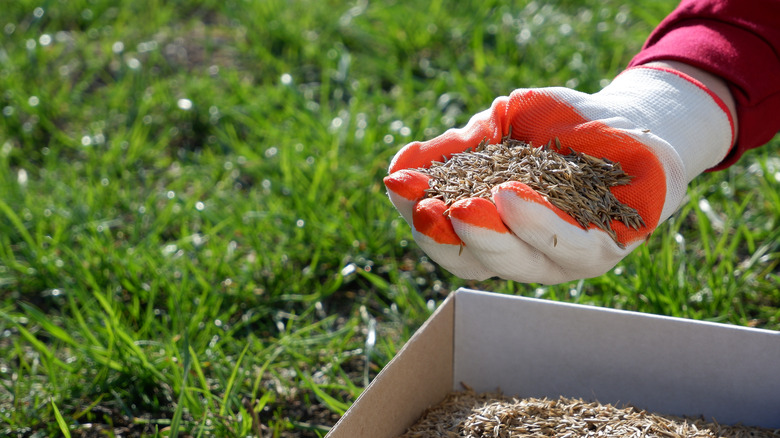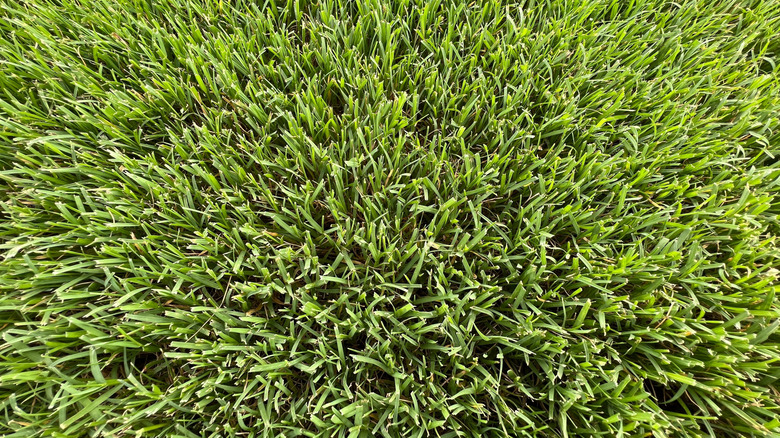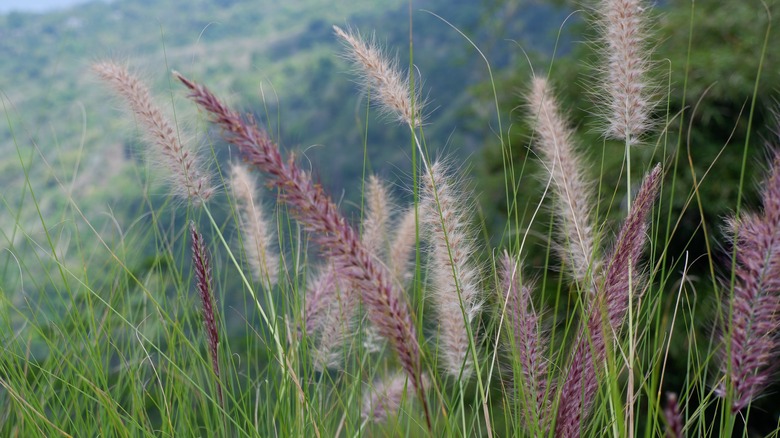The Best Time Of Year To Plant Grass Seed In Texas For A Lush, Green Lawn
More than 700 species of grass are found in Texas. Of those, 12 are commonly used as turf on athletic fields, golf courses, and in lawns. In the Lone Star State, where the summer months are frequently brutally hot and sometimes suffer drought conditions, planting grass seed should generally be done in either the spring or fall so the new plants have time to establish themselves. High daytime temperatures can stress the root systems and burn the tender leaves of emerging seedlings, while chilly nighttime lows can prevent the seeds from germinating.
Warm season grasses like Bermudagrass and St. Augustine turn brown and appear to be dead over the winter months when temperatures drop to freezing or below, but they're not dead, they're dormant. As the days get warmer in the spring, a lush, green lawn will replace the brown blades. For a lawn that's green year-round, choose a variety such as tall fescue or Texas bluegrass that doesn't experience dormancy, or overseed the lawn with a cool season grass.
Warm season grasses
Drought-hardy and durable, Bermudagrass (Cynodon dactylon) grows quickly from seed and thrives in high temperatures. Because of its resilience, Bermudagrass is often used on golf courses, athletic fields, and in high-traffic lawns. Plant seeds in late spring, when the low temps are consistently above 60 degrees Fahrenheit and there's no danger of frost.
Slow-growing zoysiagrass (Zoysia) is very drought-tolerant and will grow in light shade or full sun. Its dense growth also makes it suitable for high-traffic lawns. While it can be started from seed, it is easier to establish a zoysia lawn from sod or plugs. Plant zoysiagrass in the spring when daytime temperatures are consistently warm. It can also be planted in the fall, at least 60 days before the first frost.
Less drought-tolerant than Bermudagrass or zoysia but easier to grow in the shade, St. Augustinegrass (Stenotaphrum secundatum) is a grass you should plant for a lush, green lawn. It does not do well on high-traffic lawns, but if you have a sloping lot, this grass will prevent erosion and help with the soil's water retention. Plant seeds in the late spring or summer when daytime temperatures are above 80 degrees Fahrenheit, but no later than 90 days before the first frost. St. Augustine grass will stay green year-round in south Texas, as long as there is no hard freeze.
Grass seed for year-round green
Dark green tall fescue (Lolium arundinaceum/Schedonorus arundinaceus) is one of the most robust cool-season grasses because of its heat- and drought-tolerance relative to other winter fescue varieties. Despite this, its use is limited to north Texas, where summer temperatures are lower than in southern areas of the state. This is a type of grass that loves life in well-draining, sandy soil. While you can plant tall fescue in the spring, it's best to plant it between September 1 and October 15 so the plants can establish themselves over the winter and before summer's heat.
Grasses native to Texas use less water and require less pesticides and fertilizer. They also protect the soil and require less maintenance. Texas bluegrass (Poa arachnifera), a cross between native Kentucky and Texas bluegrasses, needs less watering than tall fescue but also doesn't tolerate high traffic. This is an ideal grass for natural, unmown lawns because of its tall, showy white flowers that bloom in the spring. While growing from seed is uncommon, it can be done in Texas in early spring or fall.
Note that if you have a warm season grass lawn, you can overseed with a cool season grass variety like annual ryegrass (Lolium multiflorum) to maintain your green lawn through the winter. Overseed in late October through November either by hand, with a broadcast spreader, or with spray-on grass seed.


